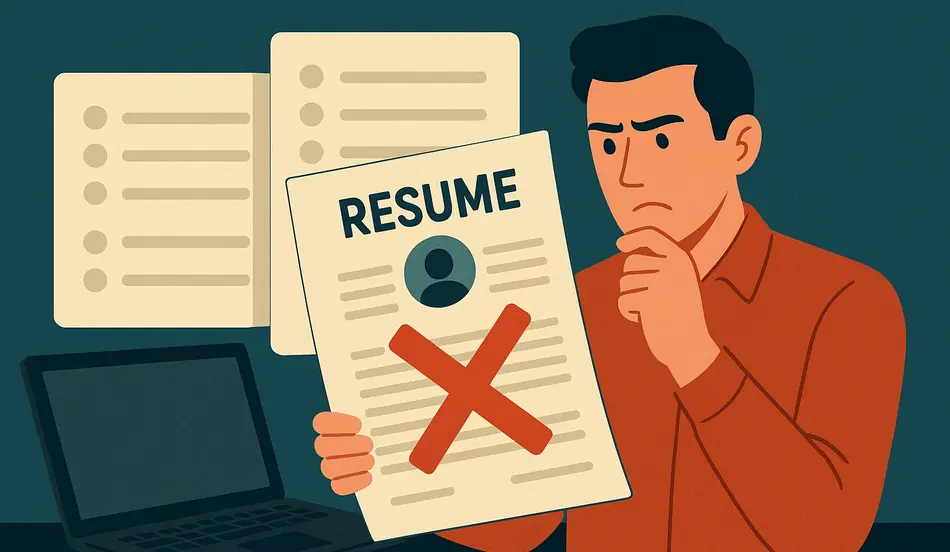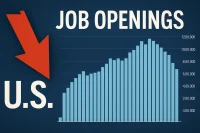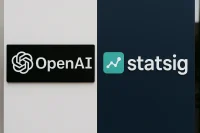The ATS myths resume optimization 2025 landscape is filled with dangerous misconceptions that are costing qualified candidates their dream jobs. As someone who has screened over 100,000 resumes at Google, Uber, and TikTok, and written the actual software code that tells machines how to read resumes, I can tell you that most job seekers are solving the wrong problem entirely. The ATS myths resume optimization 2025 that are circulating online aren’t just wrong—they’re actively harmful to your job search success.
The ATS myths resume optimization 2025 that job seekers believe are preventing them from getting interviews aren’t based on how applicant tracking systems actually work. Instead, they’re based on misinformation spread by companies trying to sell resume optimization services and social media influencers chasing views with “hacks” that don’t work. The truth about ATS myths resume optimization 2025 is that the system isn’t your enemy—it’s simply a database that stores your information for human recruiters to review.
The Real Problem: It’s Not Rejection, It’s Invisibility
The ATS myths resume optimization 2025 that job seekers focus on miss the fundamental issue: you’re not being rejected by a robot, you’re being overlooked by humans who have too many resumes and too little time. When you apply for a job and hear nothing back, it’s not because an algorithm filtered you out—it’s because your resume didn’t make your value immediately clear to the recruiter who skimmed it in seconds.
The ATS myths resume optimization 2025 that circulate online create a false sense of control. Job seekers believe that if they can just crack the code, optimize their keywords, or achieve a certain “ATS score,” they’ll automatically get interviews. This couldn’t be further from the truth. The real ATS myths resume optimization 2025 solution isn’t about gaming a system—it’s about writing a resume that makes a human recruiter stop scrolling and pay attention.
Understanding How ATS Systems Actually Work
Before we debunk the ATS myths resume optimization 2025 that are wasting your time, let’s understand what applicant tracking systems actually are. The “T” in ATS stands for “tracking,” not “terminator.” These systems are glorified databases that store files, let recruiters post jobs to job boards, track candidates through the interview process, and help search through applications. That’s it.
The ATS myths resume optimization 2025 that suggest these systems are powered by advanced AI are completely false. Most ATS platforms are legacy systems that are 20-30 years old, patched together with digital duct tape. They were built to track, not to judge. You can’t plug machine learning into a 20-year-old workflow and expect it to make hiring decisions.
Myth 1: ATS Systems Automatically Reject Resumes Without Keywords
The first of the ATS myths resume optimization 2025 is the belief that applicant tracking systems automatically reject your resume if you don’t have the right keywords. This myth suggests that if you forget to include phrases like “cross-functional” or “stakeholder alignment,” the ATS tosses your resume into the trash.
Why This Myth Is Wrong
There is no hidden rejection algorithm scanning your resume for a checklist. The ATS doesn’t ding you for a missing word, and it doesn’t operate on a scoring system. In fact, it doesn’t reject candidates at all. Applicant tracking systems store resumes and help recruiters manage applications, but most recruiters don’t use keyword filters because they’re clunky, outdated, and often surface the wrong candidates entirely.
What This Means for You
Chasing keywords is like writing for a robot that’s not even in the room. You dilute your message trying to impress a system that is not filtering you out, and in the process, you end up burying the parts of your experience that actually make you competitive.
What to Do Instead
Don’t optimize for density—optimize for clarity. Use the job title and core skills from the posting and embed them naturally into your achievements and bullet points. Don’t just say “project management.” Instead, say “led a cross-functional team of eight, delivering new product features 2 weeks ahead of schedule.”
Myth 2: You Need an ATS-Compliant Resume
The second of the ATS myths resume optimization 2025 is the belief that you need an “ATS-compliant” resume with a high compatibility score. Resume scoring tools claim to tell you how ATS-compliant your resume is, assigning percentages like 67%, 82%, or 93% and making it feel like you’re just one adjustment away from getting through the system.
Why This Myth Is Wrong
Those scores aren’t based on anything real. They’re not coming from an ATS at all. They’re created by third-party companies like JobScan who are trying to sell resume audits. These tools invented a metric, attach it to your resume, and frame it as a barrier so they can sell you their solution.
What This Means for You
Optimizing your resume for a fake score doesn’t just waste your time—it makes your resume worse. You start removing the parts that make you credible, all in the name of chasing a number that never even mattered. No one on the hiring team will ever see that number.
What to Do Instead
There is no such thing as an ATS-compliant resume. What you need is a reader-compliant resume—something that a human can skim in 5 seconds and immediately understand why you’re qualified. Stick to standard fonts, avoid templates with graphics or gimmicks, and make sure your strongest achievements show up where the eye lands first.
Myth 3: The White Font Trick Works
The third of the ATS myths resume optimization 2025 is the persistent belief that hiding keywords in white font at the bottom of your resume will fool the system. The idea is that the ATS will scan and see the keywords, but human recruiters won’t notice them.
Why This Myth Is Wrong
When you submit your resume, everything, including the white font, gets extracted into plain text. That invisible block of keywords becomes part of your application record. If a recruiter copies and pastes your resume to send it to a hiring manager, that hidden section shows up in full, and you’ve gone from being a potential fit to someone who’s trying to game the system.
What This Means for You
The white font trick doesn’t make you look tech-savvy—it makes you look insecure and risky. You’re signaling that you don’t trust your own experience to speak for itself.
What to Do Instead
If the job calls for a specific skill, don’t hide it—highlight it. Instead of burying “data analysis” 10 times in invisible text, write a line that shows you’ve done it: “Performed data analysis on customer retention, leading to a 15% increase in engagement.”
Myth 4: ATS Systems Use AI to Screen Candidates
The fourth of the ATS myths resume optimization 2025 is the belief that modern ATS platforms use AI to automatically evaluate and reject candidates. This myth suggests that the system scans your resume, scores it, ranks you, and filters you out before a human ever gets involved.
Why This Myth Is Wrong
Most ATS systems are legacy platforms that are 20-30 years old and were built to track, not to judge. Legally, companies are not allowed to use AI to make hiring decisions without running into serious compliance issues. There are currently lawsuits against platforms suspected of doing exactly that.
What This Means for You
If you’re spending hours trying to beat the AI, you’re solving for a problem that doesn’t exist. There’s no machine making hiring decisions, but there is a recruiter skimming your resume in real time under pressure and deciding in seconds whether to keep reading or reject you.
What to Do Instead
Write for a person, not a platform. Structure your resume so a human can immediately grasp your relevance and results. Lead with impact, use language that’s easy to skim, and make it obvious where you’ve made a difference.
Myth 5: Getting Rejected Means the System Filtered You Out
The fifth of the ATS myths resume optimization 2025 is the belief that when you apply and hear nothing, the ATS rejected you. This myth suggests that some hidden algorithm scanned your resume, decided you weren’t qualified, and filtered you out before a human even looked.
Why This Myth Is Wrong
Federal rules like OFCCP and EEOC explicitly prohibit using automated tools to make hiring decisions. Every resume is supposed to be reviewed by human eyes—that’s not optional, it’s required by law. The idea of AI or bots rejecting you before anyone reads your resume isn’t just wrong—it’s impossible.
What This Means for You
You’re not getting filtered out by a robot—you’re just getting overlooked by a person who has too many resumes and too little time. The real issue is volume. Hundreds of thousands of people apply to jobs every day, and even if you optimize your resume perfectly for some imaginary score, you’re just landing in a bigger pile of other people who did the same thing.
What to Do Instead
Optimize for attention, not for software. Make your value clear in the first few lines by leading with results. Use formatting that supports quick scanning, not keyword stuffing. Your resume isn’t being judged by a system—it’s being skimmed by a human.
What Actually Works: The Recruiter-Approved Framework
Now that we’ve debunked the ATS myths resume optimization 2025 that are wasting your time, let’s focus on what actually works. The real question isn’t “Did the system understand my resume?” It’s “Did a human care enough to keep reading?”
Strategy 1: Write for the Reader, Not the System
Recruiters skim fast. They’re juggling multiple roles, hundreds of resumes, and tight deadlines. If your resume opens with a dense block of text or generic job duties, you’ve already made their job harder. The resumes that get noticed are scannable and instantly clear.
What to Do: Make your most recent job title immediately obvious. Frontload your best accomplishments. Use a layout that works on any screen.
Strategy 2: Show Business Impact, Not Job Activity
If your bullet points sound like a job description—”managed weekly standups” or “oversaw internal comms”—you’re describing your job duties. What recruiters want to see is momentum and impact. What changed because you were there?
What to Do: Highlight outcomes with specific numbers: “Reduced churn by 14%,” “Cut onboarding time by 3 weeks,” “Increased pipeline conversions by 22%.” These are the results that tell a story that moves the reader forward.
Strategy 3: Bridge the Title Gap Before Someone Disqualifies You
If your current title doesn’t match the role you’re applying for, even if your experience is perfect, you may get skipped. Not because you’re unqualified, but because your title doesn’t translate.
What to Do: Add context using parentheses and clarifiers. Lead with a one-line summary that connects the dots: “Product Manager (Functionally leading roadmap without formal title).” If they can’t see your fit within a few seconds, they’re not going to keep reading.
The Knockout Questions You Should Know About
One important aspect of ATS myths resume optimization 2025 that many job seekers don’t understand is knockout questions. These are questions that can automatically reject you, but they’re not based on your resume—they’re based on basic qualifications.
Common Knockout Questions Include:
- Are you over 18 years of age?
- Do you require visa sponsorship?
- Do you have the required degree or certification?
- Are you authorized to work in this country?
These questions are set up by recruiters to filter people out at the very beginning, but they’re not the core of what ATS systems are designed to do.
Looking to Hire Fast?
Hiring managers can now post jobs for free on WhatJobs and connect with millions of jobseekers.
👉 Post a Job Now →The Bottom Line: Focus on Clarity, Not Keywords
The ATS myths resume optimization 2025 that job seekers believe are preventing them from getting interviews are based on a fundamental misunderstanding of how the hiring process works. Instead of asking “Did I get enough keywords?” start by asking “Does this make sense to a human if they’re skimming it in 5 seconds?”
The recruiter isn’t your enemy. The ATS isn’t your gatekeeper. Your real challenge is simple: get seen, get read, and get remembered. And that starts with clarity.
When you stop guessing and start targeting the right things, you’re not just tweaking your resume—you’re giving yourself a real shot at landing interviews for the jobs you actually want. The ATS myths resume optimization 2025 that are circulating online are distractions from the real work of writing a resume that makes your value from a business perspective clear to the people who make the decisions.
Frequently Asked Questions
What are the most dangerous ATS myths resume optimization 2025 that job seekers believe?
The most dangerous ATS myths resume optimization 2025 include believing that systems automatically reject resumes without keywords, that you need an ATS-compliant resume with a high score, that the white font trick works, that ATS systems use AI to screen candidates, and that getting rejected means the system filtered you out.
Why don’t ATS systems automatically reject candidates based on keywords?
ATS systems don’t automatically reject candidates because they’re databases designed to store and organize information, not to make hiring decisions. Most recruiters don’t use keyword filters because they’re clunky, outdated, and often surface the wrong candidates entirely.
What’s the real reason I’m not getting callbacks from job applications?
The real reason you’re not getting callbacks isn’t because an ATS rejected you—it’s because your resume didn’t make your value immediately clear to the recruiter who skimmed it in seconds. The problem is invisibility, not rejection.
How should I optimize my resume for ATS systems?
Instead of optimizing for ATS systems, optimize for human readers. Write for clarity, not keywords. Make your value immediately obvious, use specific numbers to show impact, and structure your resume so it’s easy to scan quickly.
What’s the difference between ATS-compliant and reader-compliant resumes?
There’s no such thing as an ATS-compliant resume. What you need is a reader-compliant resume—something that a human can skim in 5 seconds and immediately understand why you’re qualified. Focus on clarity, not compatibility scores.
Do ATS systems use AI to automatically screen candidates?
No, most ATS systems are legacy platforms that are 20-30 years old and were built to track, not to judge. Legally, companies are not allowed to use AI to make hiring decisions without running into serious compliance issues.
Case In Point :
Consider Sarah, a marketing professional who spent months optimizing her resume for ATS compatibility scores. She used keyword stuffing, white font tricks, and chased every “ATS hack” she found online. Despite achieving a 95% compatibility score, she wasn’t getting any interviews. After learning the truth about ATS myths resume optimization 2025, she completely rewrote her resume to focus on clarity and human readability. She led with specific results like “Increased lead generation by 40% through targeted campaigns” instead of stuffing keywords. Within two weeks, she had three interview requests. Sarah’s story illustrates how focusing on ATS myths resume optimization 2025 actually hurts your chances, while writing for human readers gets you noticed. Her success demonstrates that clarity and impact matter more than any compatibility score or keyword density metric.




